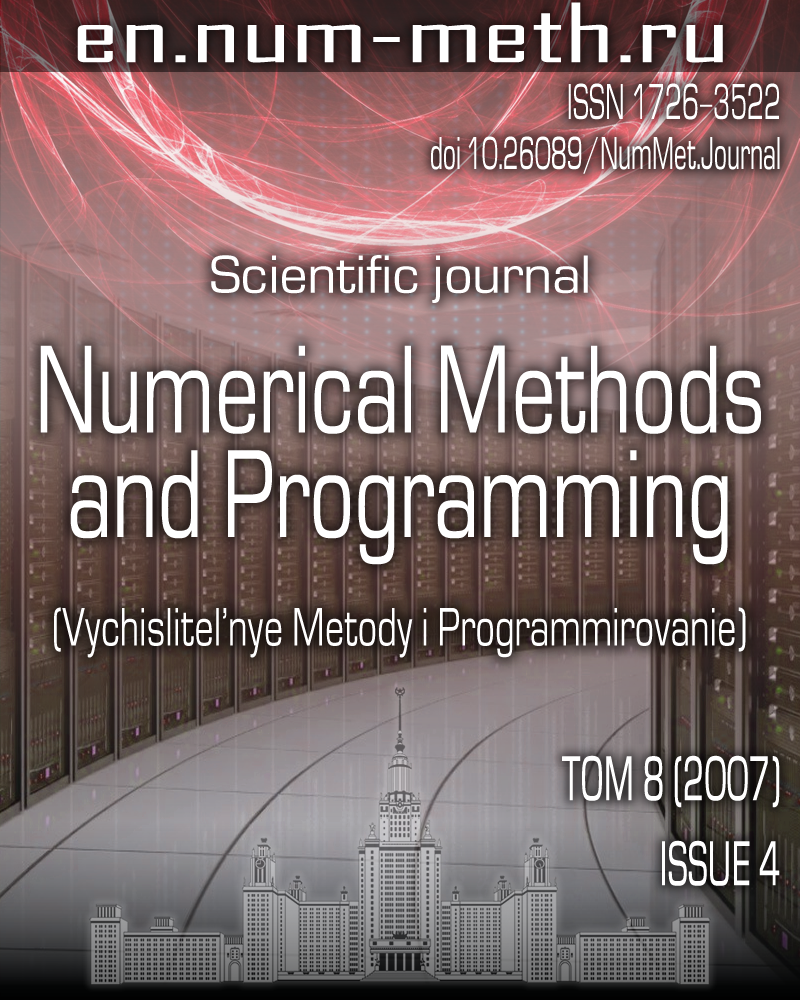Computing first-order zeros of analytic functions with large values of derivatives
Keywords:
аналитические функции
нули функций
контурное интегрирование
функции комплексного аргумента
Abstract
There are some practically important types of complex analytic functions whose zeros are narrowly surrounded by large function values. Zeros of this kind are said to be deep. Computation of deep zeros presents difficulty for commonly used methods because of large values of function derivatives. An efficient algorithm for computing deep zeros is proposed on the basis of contour integration of the function argument. Its variations along the contour are much smaller than variations of the function values, which makes the algorithm efficient. The location of the argument maxima along the contour of integration yields an initial approximation for the zero whose value is further refined by applying the Muller algorithm.
Published
2007-10-22
Issue
Section
Section 1. Numerical methods and applications
References
- Rytov S.M. Electromagnetic properties of finely layered structure // J. of Experim. and Theor. Physics. 1955. 29, N 5(11). 605-616.
- Muller D.E. A method for solving algebraic equations using an automatic computer // Mathem. Tables and Aids to Computation. 1956. 10. 208-215.
- Traub J.F. Iterative methods for the solution of equations. Englewood Cliffs: Prentice-Hall, 1964.
- Davis L.M., Lyness J.N. A numerical method for locating the zeros of an analytic function // Mathematics and Computation. 1967. 21, N 100. 543-560.
- Carpentier M.P., Dos Santos A.F. Solution of equations involving analytic functions // J. of Computational Physics. 1982. 45, N 2. 210-220.
- Visual Numerics. IMSL. Fortran Subroutines for Mathematical Applications. Math/Library, Vol. 1 & 2. Ch. 7. 841-842.

